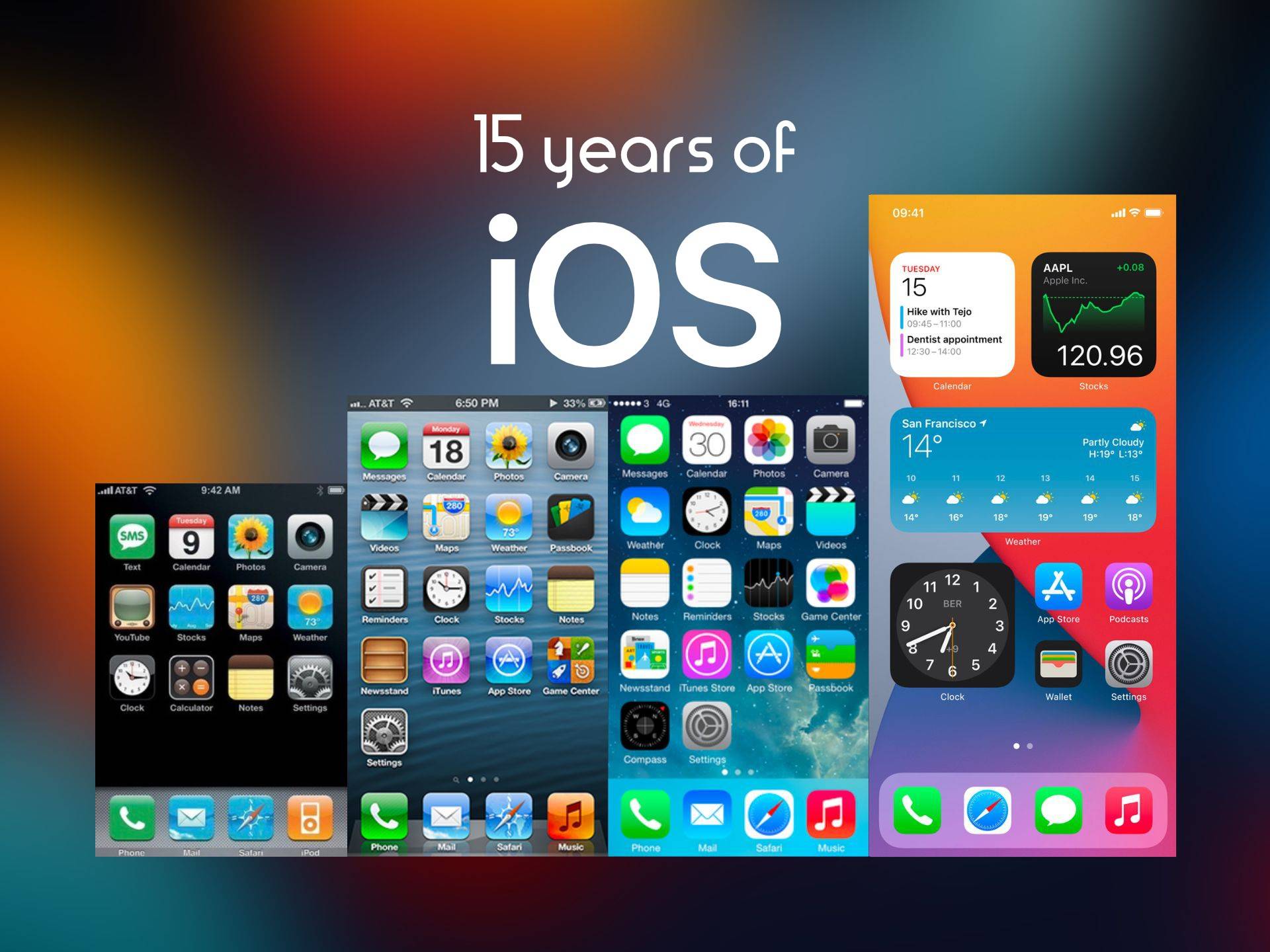
Today marks 15 years since Apple officially released iPhone OS 1.0 on June 29, 2007. The first version of iOS was a breakthrough, and it introduced a multitouch display smartphone. It was new and something that hadn’t been seen before in a commercial product. The first iPhone had an on-screen keyboard, multitouch functionality, iTunes integration, and many more features. Fun fact: The operating system wasn’t called iOS until the fourth iteration.
While the first iPhone and iPhone OS were significant historical breakthroughs, the phone and the operating system lacked major essential features. It didn’t support third-party applications, couldn’t record video, and only had a few dozen pre-installed applications, enabling users to complete basic tasks, such as browsing the web with Safari, playing music, and seeing photos.
In this article, we’ll talk about each iOS version, its highlighted features, the history of the platform, and the things that made it one of the most advanced systems in the world. We also recommend you to visit our dedicated pages that cover the iPhone 13 mini, iPhone 13, iPhone 13 Pro, and iPhone 13 Pro Max devices, as well as our unique guide that explains everything new in iOS 16.
CONTENTS
CLOSE
iPhone OS 1.0 – Where it all began
iPhone OS 1.0 was announced at the iPhone keynote event on January 9, 2007. It launched alongside the first, original iPhone on June 29, 2007. During the announcement, Apple didn’t provide the operating system’s official name, and Apple’s marketing material only stated that it was running a desktop operating system based on OS X.
Apple developed nearly two dozen different concepts, and tested several other user interfaces before it decided to pick the one that was presented at the keynote. There was a lot of confusion about the idea of typing on a keyboard, since only physical keyboards were being used at the time on all devices. No one was doing it the same way Apple was, and it took some time for people to adjust and play around with the idea.
The operating system had a pretty basic set of features. It could send and receive text messages, had a calendar application, a photos app, a camera, YouTube, maps, stocks, weather, clock, calculator, notes, settings, a phone and mail app, and Safari as a web browser. App Store didn’t exist, and users were able to sync and purchase new music using the iTunes integration.
iPhone OS 2
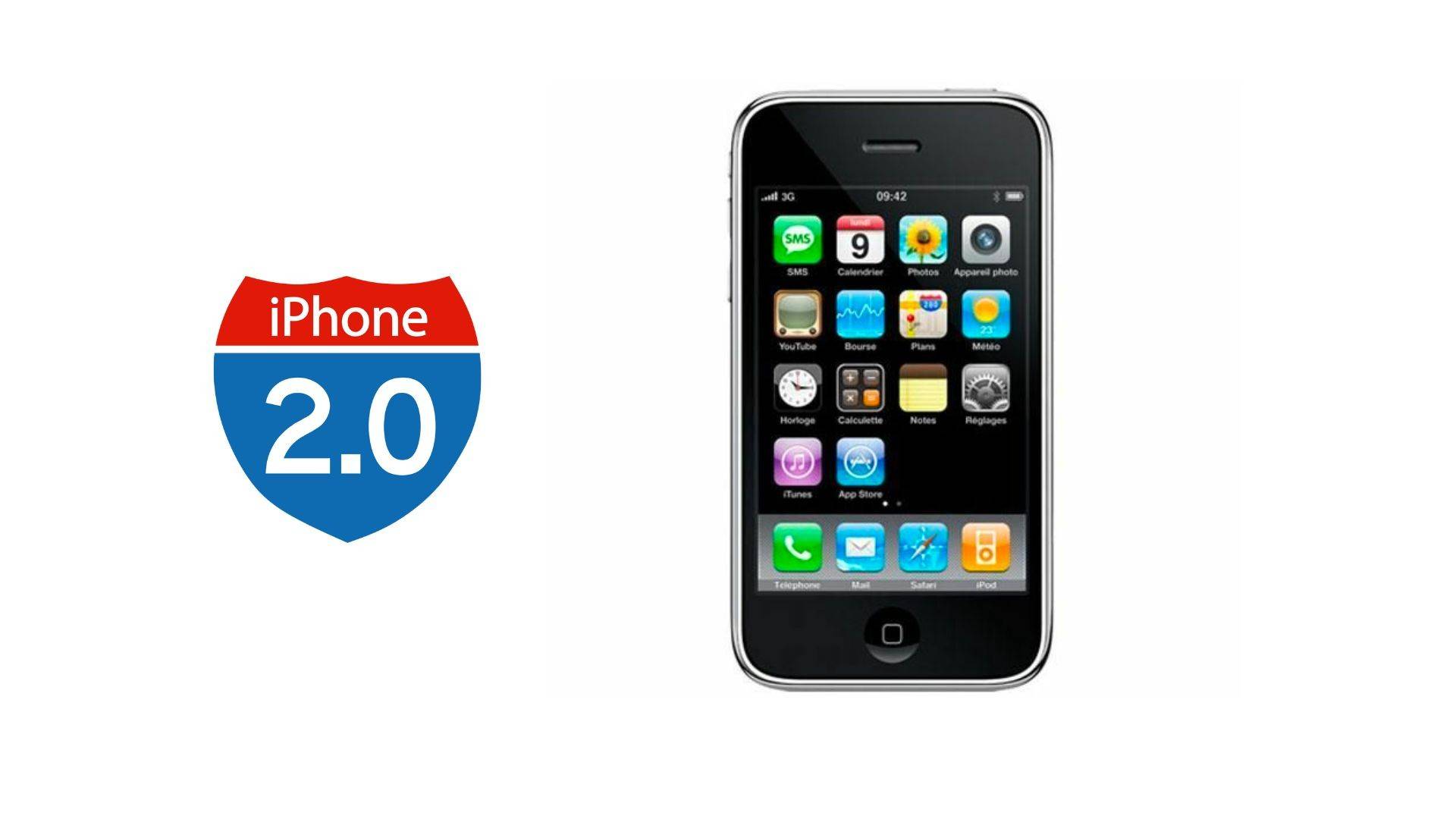
iPhone OS was announced at the 2008 World Wide Developers Conference (WWDC) on June 9, 2008. It was released publicly on July 11, 2008, alongside the iPhone 3G, the second-generation iPhone. It included some of the most significant changes and was the first operating system to come pre-loaded with the newly introduced App Store.
The App Store allowed developers to create third-party applications that could then be used on the device. The App Store was the beginning of what has since become a massive money maker for the company. iPhone OS 2 was later available to iPod Touch users for a flat fee of $9.95, and free updates didn’t exist back then.
The new operating system introduced many changes, adding new languages, the ability to import contacts from a SIM card, new settings, screen captures, and the option to save images from the Mail and Safari apps to Photos, parental controls, and Camera app improvements.
Apple also added many more updates in 2.1.1, 2.2, and 2.2.1 that improved the operating system’s performance on the existing iPhones. Later, Apple added new features such as emojis, the ability to disable autocorrect for the keyboard, faster updates, a 24-hour clock for UK users, street view in Maps and many more.
iPhone OS 3
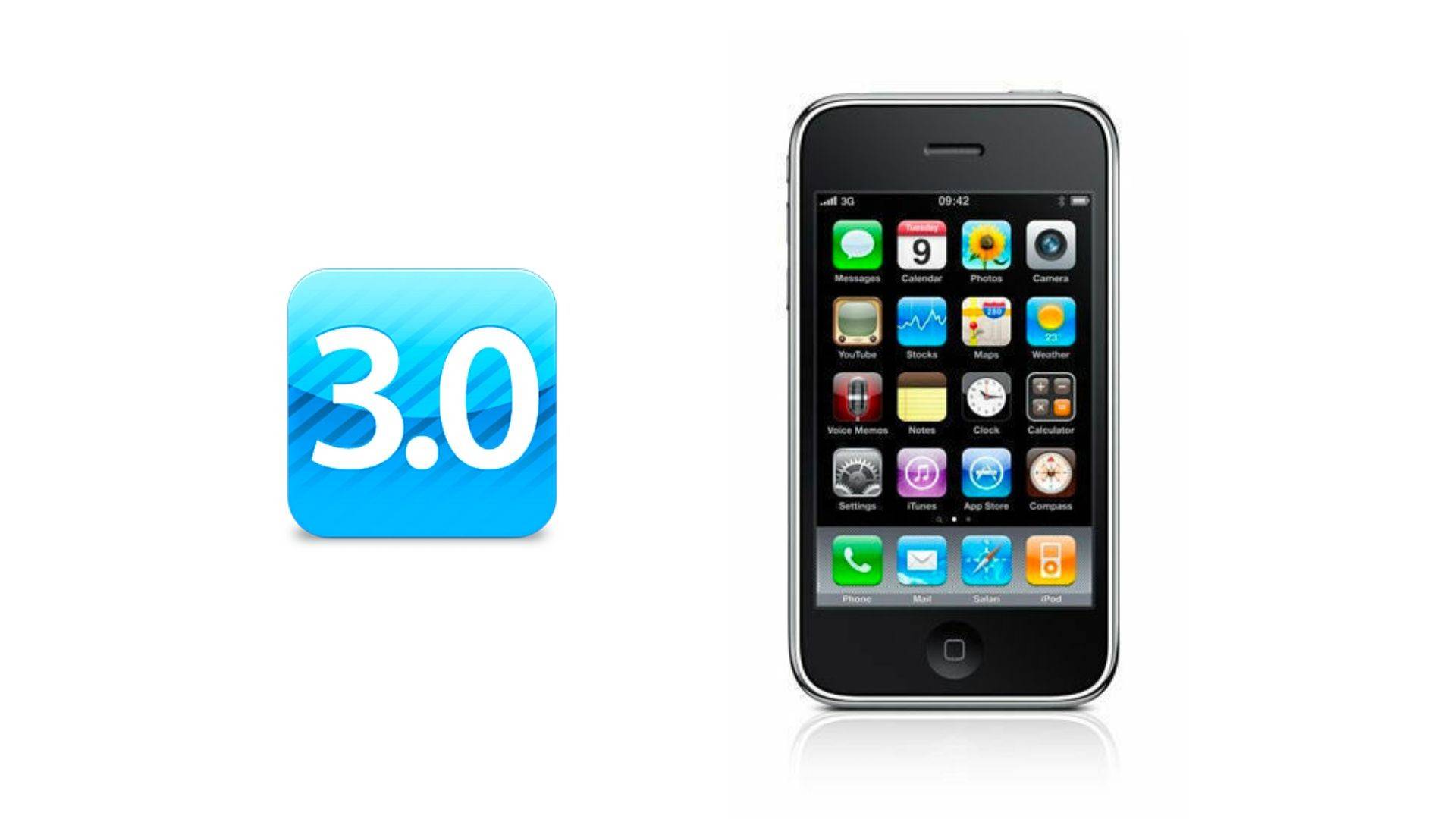
iPhone OS was announced on March 17, 2009, alongside the iPhone 3GS. It was available to all previous iPhones, including the iPod Touch 1st Generation. The first generation iPad also arrived later with iPhone OS 3.2.
The new software added copy and paste functionality for text and images, support for in-app purchases, MMS support in the Messages app, and most notably, the ability to record videos using the camera app – yes, it took Apple more than two years to add this feature. There were a lot of new features that we take for granted nowadays.
Future versions also fixed many bugs, and it was the first OS from Apple to support larger displays (the first-generation iPad had a 9.7-inch 1024 x 768 display, which was unveiled in 2010).
iOS 4
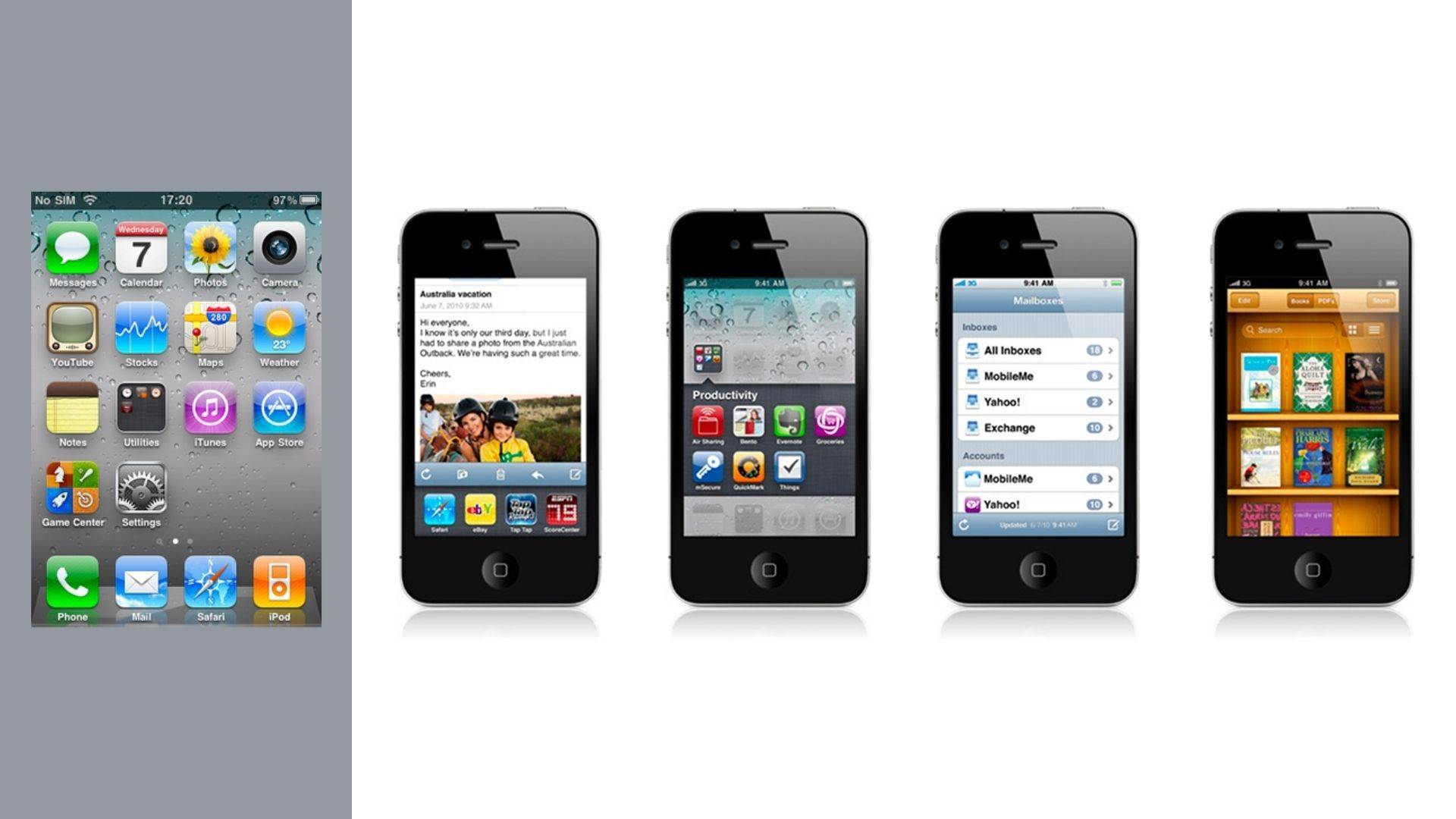
The fourth version of the iPhone OS was renamed to iOS, and it was released to the public on June 21, 2010, alongside the iPhone 4. This update removed support for the first generation iPhone and the first generation iPod Touch. Back then, chipsets weren’t as powerful as today, and Apple didn’t have a track record for 5+ years of software support – and that wasn’t such a big deal back then.
iOS 4 was supported on iPhone 3G and second-generation iPod Touch, but it had limited features, and they lacked multitasking and the ability to change the home screen wallpaper. While there were a few issues and missing features, iOS 4 was the first completely free OS, and users didn’t have to pay to receive the update on their compatible devices.
iOS 4 brought many new features and apps to the platform, namely the ability to multitask, FaceTime, iBooks, a new way to organize applications into folders, AirPlay, AirPrint, and the option to turn on Personal Hotspots.
iOS 5

Apple released iOS 5 on June 6, 2011, at the WWDC event. It was released to the public on October 12, 2011, alongside the iPhone 4S. The operating system was compatible with all iPhones dating back to the iPhone 3GS and iPod Touch (3rd generation), as well as the first-generation iPad. iOS 5.1 also supported the newly unveiled iPad (3rd generation).
By 2011, Cloud storage started to surface as the next big thing, and Apple was one of the first companies to announce a new service called iCloud. It allowed users to activate their iPhones wirelessly (users were required to activate devices with a computer before this), and the ability to sync music and other contents with iTunes via Wi-Fi. iMessage, Notification Center, and Siri all debut on the iPhone 4S and iOS 5.
iOS 6
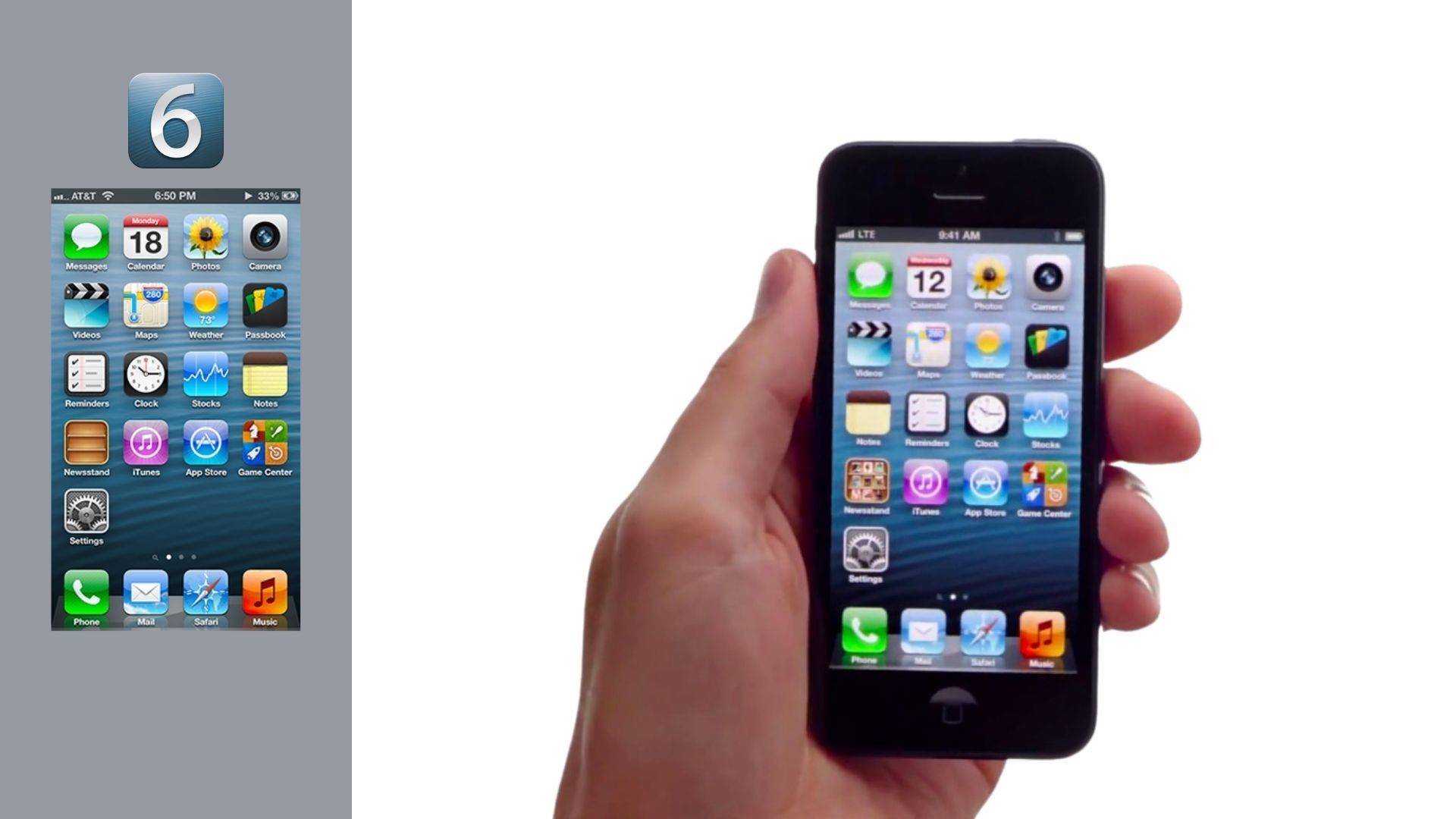
iOS 6 was publicly released on September 19, 2012, alongside the iPhone 5, iPod Touch (5th gen.), and the iPad (4th generation). The new software dropped support for the iPod Touch (3rd generation), and the first generation iPad due to performance issues. While the software was compatible and supported on the iPhone 3GS and iPod Touch (4th generation), it was limited in features. All newer Apple devices, including the iPhone 4, iPod Touch (5th gen.), iPad 2, and iPad Mini (1st gen.), fully supported the operating system.
iOS 6 made Siri more useful by including sports and other general information, making it one of the best digital assistants. Although the idea of digital assistants was only just taking off, and it was closer to a voice assistant than anything else that existed back then.
The new OS also brought significant changes, and Apple removed Google Maps and YouTubes from the device, and they were no longer pre-installed on devices. Instead, Apple introduced its own Maps application, which received a lot of criticism for providing wrong directions and its buggy behavior that also lacked a lot of features compared to Google Maps.
Other notable features include the introduction of Passbook (renamed to “Wallet”) and the Do Not Disturb toggle that suppresses incoming calls and notifications.
iOS 7
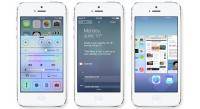
iOS 7 was released to the public on September 18, 2013, alongside the iPhone 5C and the iPhone 5S. It was the first major design overhaul. The new system introduced vibrant colors, gradients, new animations, blur effects, and a modern user interface. The current version of iOS still has a few things in common with iOS 7, although the design language has improved a lot in recent years.
iOS 7 supported all iPhones dating back to the iPhone 4 – the iPhone 4, iPhone 4S, iPad (3rd gen), and iPad 2 have lacked many of the newly introduced features.
iOS 7 was a complete overhaul, and Apple brought support for the beloved Touch ID fingerprint sensor, Control Center (swipe up from the bottom of the display to access data, Wi-Fi, Bluetooth, screen brightness, media control, and other toggles). It was a game-changer, and while this is subjective, it encouraged a lot of Android users to make a switch.
The OS also added support for the newly introduced AirDrop feature, allowing users to share files between iPhones. Apple also introduced the Find My iPhone Activation Lock that prevented others from gaining access to devices without the original owner’s email and password.
iOS 8

Like most previous mobile systems from Apple, iOS 8 was announced at the WWDC conference on June 2, 2014. It was released on September 17, 2014, alongside the iPhone 6 and iPhone 6 Plus flagships. They were the first iPhones to come with a larger display (since the iPhone 5), and they each come with 4.7-inch and 5.5-inch displays, respectively.
iOS 8 supported all iPhones going back to the iPhone 5, iPod Touch (6th gen.), iPad (4th gen.), and the iPad Mini 2. Apple received widespread complaints due to the slow performance on older devices, and the software dropped support for the iPhone 4. The iPhone 4S was supported, but the user experience was far from great and lacked many new features.
Design-wise, iOS 8 wasn’t much of an upgrade, and Apple mainly focused on adding new features and fixing a few design choices made in iOS 7 to make the fonts easier to read. Alongside the enhancements, iOS 8.4 also introduced Apple Pay, and the Apple Music subscription service. Apple also added new features to iCloud, including iCloud Drive, iCloud Photo Library and iCloud Music Library.
Some of the new features and applications included the option to use “Hey Siri” to recognize when it was called upon, Time-lapse was added to the camera, and users could use third-party keyboards. Apple also launched Handoff continuity features to allow Apple devices to work together. Family Sharing also debuted on iOS 8, and so did HomeKit.
iOS 9

iOS 9 wasn’t much of an upgrade features-wise, and Apple took a much-needed step back to focus on eliminating all the bugs and problems introduced in previous software updates. iOS 9 was released on September 16, 2015, alongside the new iPhone 6S, iPhone 6S Plus, and iPad Mini 4 devices.
Since iOS 9 wasn’t focusing on new features, the operating system received a lot of praise for fixing previous issues, and as a result, the OS was more stable. It received significant improvements regarding speed and responsiveness, and it significantly improved the usability of the software on older iPhone models and iPads. It was also one of the first operating systems to not drop support for older devices, and it was compatible with all devices that iOS 8 supported.
iOS 9 added Night Shift, Low Power Mode, and a new Public Beta program that allowed users to try out early builds of iOS before releasing to the masses. This was very popular, and the program is still being used before major releases.
Other improvements included further enhancements to Apple Maps, which now supports public transit, station details, schedules, and directions. The News app was redesigned, and Apple Pay received significant improvements. More minor tweaks improved the user experience and the interface.
iOS 10
iOS 10 rolled out on September 13, 2016, alongside the iPhone 7 and iPhone 7 Plus. It was available to all devices until the iPhone 5 and iPhone 5C devices, although these two devices and the iPad (4th generation) lacked support for some features due to the old chipset. Apple dropped support for the iPhone 4S, iPad 2, iPad (3rd generation), the first-generation iPad Mini, and the iPod Touch (5th generation).
In this update, Apple allowed users for the first time to hide and delete first-party applications, such as the Calculator, Calendar, Compass, Podcasts, Notes, and more. New locking and keyboard sounds were added, and the lock screen was also improved to allow swipe actions to open the camera, and the Today view. The “Slide to Unlock” was also removed, and users were instead asked to swipe up. Siri (third-party app integration), iMessage (iMessage apps), Maps, and multiple other first-party applications received new features, and Apple Music was also completely redesigned.
iOS 11
iOS 11 officially started rolling out on September 19, 2017. It launched alongside the iPhone 8 and iPhone 8 Plus, and the latest update dropped support for the iPhone 5, iPhone 5C, and the iPad (4th generation). The iPhone X was unveiled on November 3, 2017, and it launched with iOS 11.1.1.
The operating system also dropped support for 32-bit applications, and Apple forced developers to support 64-bit. Due to the older chip architecture, Apple A7 and A8 processors received limited support, including devices such as the iPhone 5S, iPhone 6 series, iPod Touch (6th generation), iPad Air, iPad Air 2, iPad mini 2, 3, and 4.
In iOS 11, Apple completely redesigned the App Store, and the Camera app also received a few notable features. Most of the built-in applications received several enhancements. Still, the main focus was on the iPad, which was now easier to use thanks to the redesigned Dock, Slide Over, and Split view features, Markup, Drag and drop functionality and many more. The new iPad Pro devices also supported the newly unveiled Apple Pencil, and multitasking was easier on the larger display.
iOS 12

iOS 12 debuted on September 17, 2018, alongside the iPhone XS, iPhone XS Max, and theiPhone XR devices. Apple didn’t drop support for any of its previous devices, and the software was compatible with all devices from iOS 11.
iOS 12 brought new features, further refining the user experience and the interface to improve devices. The most notable new features in iOS 12 were the Siri Shortcuts, redesigned applications such as News, Stocks, Voice Memos, and more. The system also displayed the screen time in settings, and the notifications also appeared in a new grouped view. Apple also released ARKit 2, and Memojis were now more customizable.
iOS 13 / iPadOS 13

iOS 7 revamped the complete user interface, and iOS 13 added even more enhancements with a new set of features. iOS 13 released on September 19, 2019, alongside the iPhone 11, iPhone 11 Pro, and iPhone 11 Pro Max.
The new software update introduced a brand new system-wide dark mode, a new option to sign in with an Apple user account into third-party services, new portrait lighting effects, an improved version of Siri that supports third-party music applications and audiobooks, and so much more.
One of the main reasons iOS 13 was so hyped up was because Apple decided it was finally time toseparate iOS and iPad OS into their own platforms. iPadOS borrows heavily from iOS, and it is undoubtedly still the same operating system under the hood, albeit with some changes that make it more useable and user-friendly on larger displays and pen inputs.
Apple also announced a new service called Apple Arcade and introduced new Apple Maps functionalities, such as a new look-around feature that lets users experience new places in a 360-degree environment. Beyond these new features, Apple also made Face ID faster, and it redesigned key built-in applications like Mail, Safari, Reminders and more.
iOS 14 / iPadOS 14

iOS 13 introduced a few noticeable changes, like a proper system-wide dark mode that changed the phone’s feel and looks, but iOS 14 took it a step further by introducing and supporting widgets, and adding an app drawer called “App Library”. The new update rolled out to users on September 16, 2020, and it was available for all devices that supported iOS 13.
iOS 14 and iPadOS 14 launched alongside the new iPad (8th generation), iPad Air (4th Generation), and the iPhone 12 mini, iPhone 12, iPhone 12 Pro, and the iPhone 12 Pro Max. The new features included the aforementioned widgets on the homescreen, and the App Library application drawer. The goody-packed system also came with the ability to set third-party email and web browsers. Beyond these, Apple added Picture-in-Picture, new privacy-oriented features, and App Clips and CarKey. Most, if not all, of these features were also available on iPads running iPadOS 14.
iOS 15 / iPadOS 15
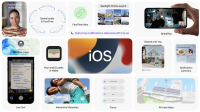
iOS 15 and iPadOS 15 are currently the latest releases, and the two operating systems support all devices dating back to the iPhone 6S series. iOS 15 supports all devices compatible with iOS 14, except the iPod Touch (6th generation). Apple has since also discontinued the iPod after 21 years.
The new operating systems were released on September 14, 2021, alongside the iPhone 13 mini, iPhone 13, iPhone 13 Pro, and iPhone 13 Pro Max devices. The iPhone SE 2022 launched alongside the new iPad Air (5th generation) running iOS and iPadOS 15.4.
iOS 15 introduced new FaceTime features that allowed users to watch movies together using SharePlay, and the new update also added the option to share screens, and listen to content together. For the first time, Apple allowed non-Apple users to talk with friends using a web solution of its service. Apple also made improvements to Spacial Audio, new Memojis, and significant changes to the Messages app.
Apple later added Live Text, Visual Search, and several privacy-focused features to protect users’ information better. The company also improved Apple Maps with new advanced features and 3D views and introduced an iCloud+ subscription service that provides VPN-like features.
iOS 16 / iPadOS 15
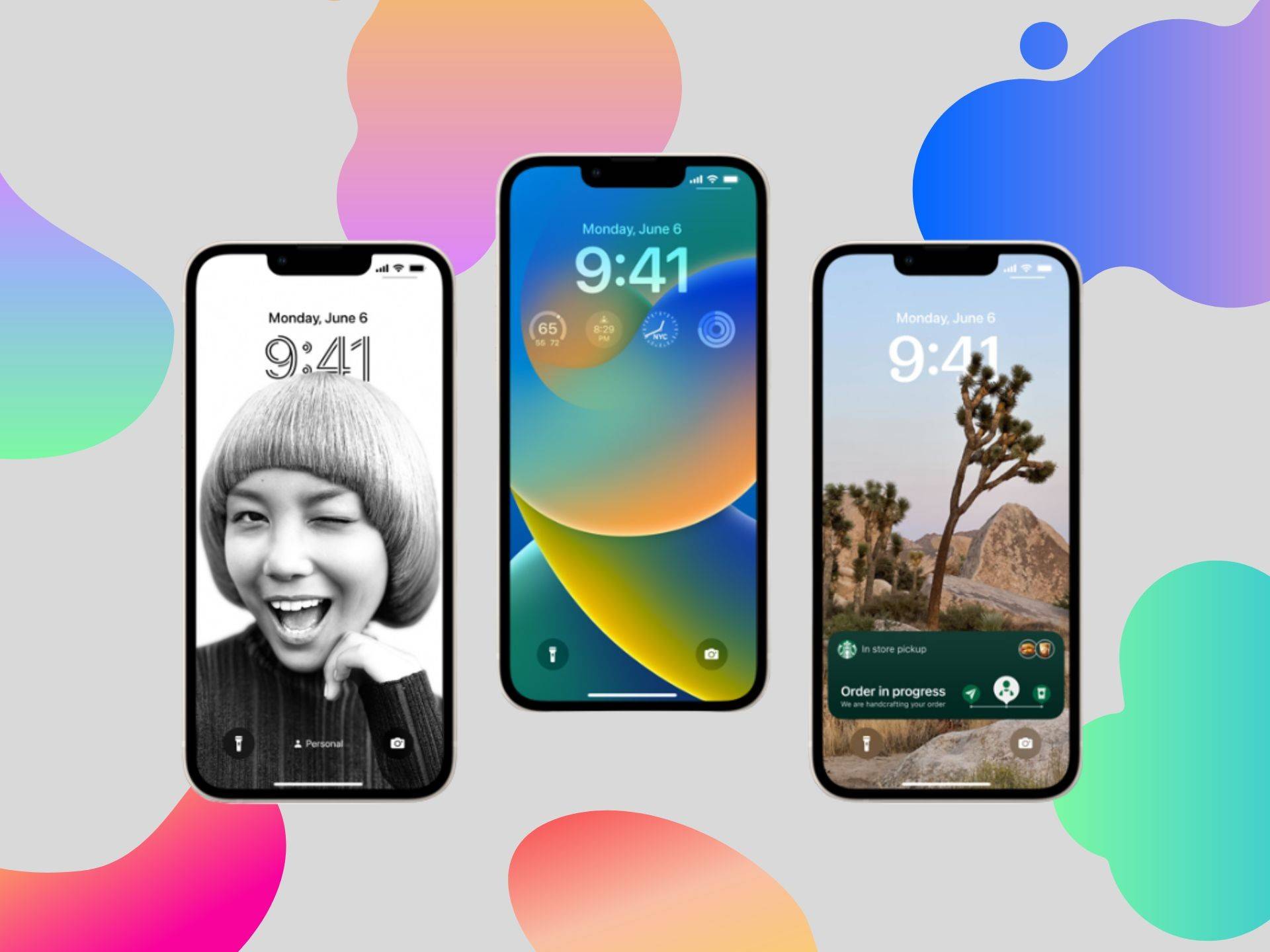
iOS 16 and iPad OS 16 was unveiled at WWDC on June 6, 2022. The new software update comes with a lot of new features, and it completely revamps the lock screen interface. We have an excellent guide that explains everything you need to know about the next major update.
A public beta is expected to be released sometime in July. As always, we don’t recommend you to try it out on your primary device.
Which version of iOS was your favorite? What are your favorite features? Let us know in the comments below!
